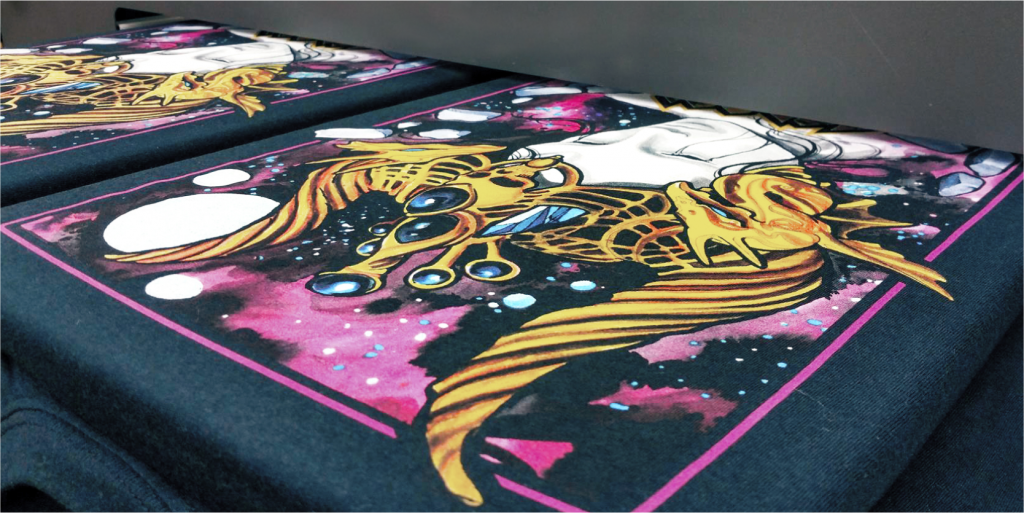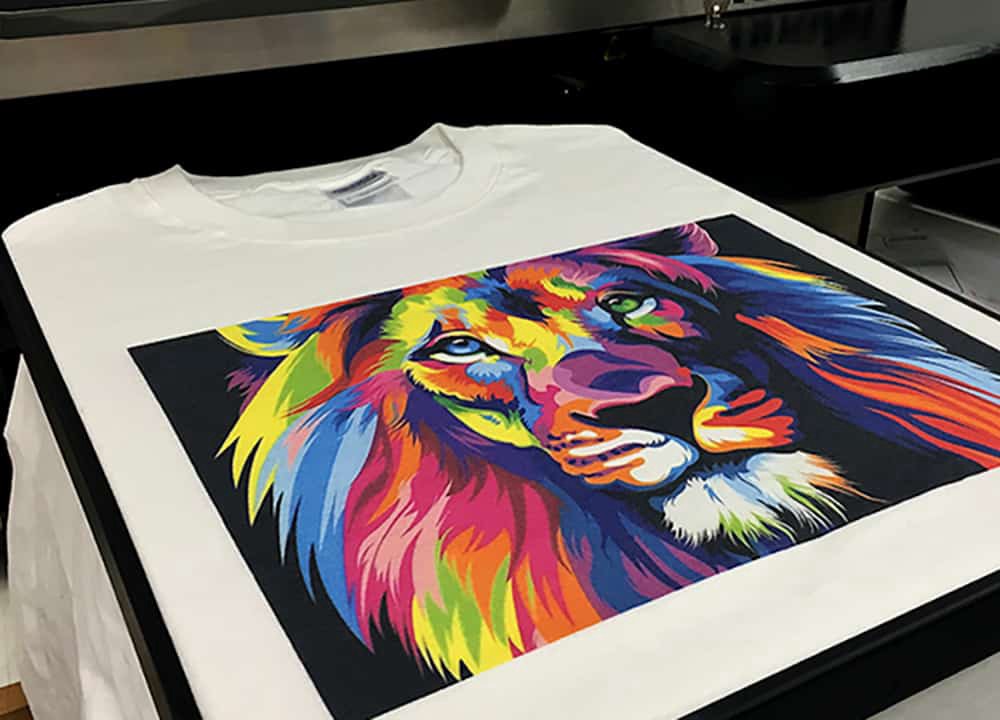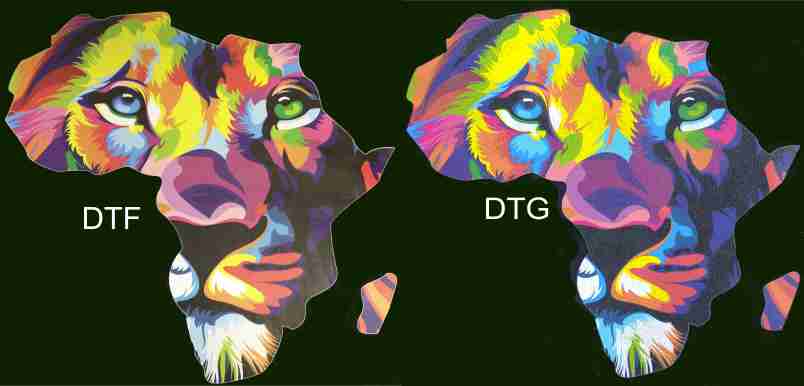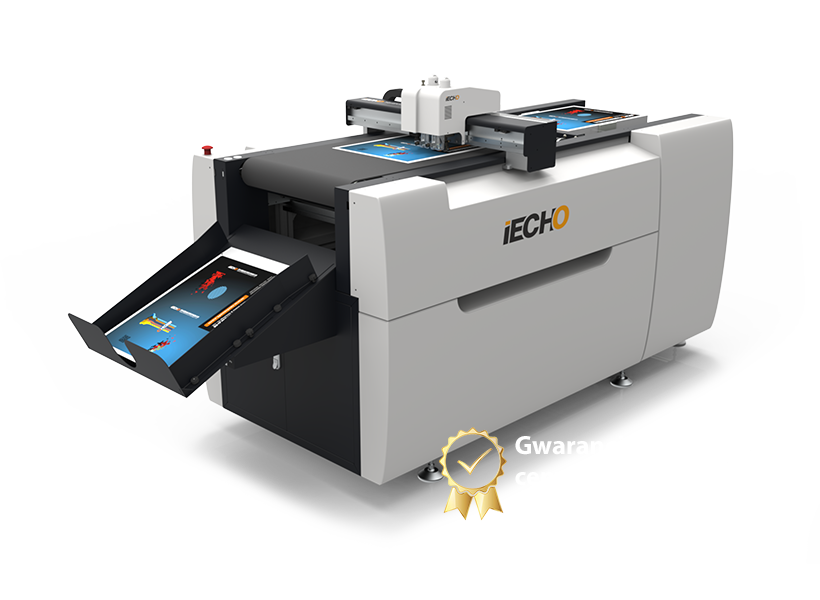DTG printing: What is direct to garment printing?
What is DTG printing and how does it work?
DTG (Direct to Garment) printing is a modern method of marking garments by directly applying a print to the fabric. This relatively new technology is revolutionizing the textile personalization market, offering high quality and versatility. Digital DTG involves the use of specialized printers adapted to print directly on garments, much like traditional inkjet printers print on paper.
In the DTG direct printing process, a special print head applies ink directly to the fabric fibers. DTG printing on clothing is made using digital technology, which allows for precise reproduction of even the most complex graphic designs with an accuracy of at least 300 DPI. This is a fundamental difference from traditional printing methods such as screen printing, where each color requires a separate stencil.

Direct DTG printing on garments involves several key steps:
- Preparation of graphic design in digital form
- Pre-treatment of garments (pretreatment) - especially important for dark materials
- Apply an undercoat of white ink (for dark fabrics)
- Printing the right design in CMYK colors
- Fixing the print using a heat press or drying tunnel
Where will DTG printing work well? Materials and applications
DTG technology will work best on cotton or high cotton content materials. DTG printing on cotton T-shirts gives the best results, as the natural cotton fibers absorb the ink perfectly, ensuring the durability and vivid colors of the print. Possibilities for using this marking method include:
- Cotton shirts and t-shirts
- Sweatshirts and sportswear
- Canvas bags
- Hats and textile accessories
- Interior design elements (pillowcases, curtains)
It is worth noting that while DTG printing works great on cotton, it can also be done on some polyester-blend fabrics, but with some limitations on color intensity and durability. For polyester fabrics, sublimation, another garment marking technique, is often a better choice.

Advantages of DTG printing
High quality and detail
One of the biggest advantages DTG printing is the ability to produce extremely detailed and colorful prints. Digital technology makes it possible to produce designs with smooth tonal transitions, shading and photographic image quality. Digital printing DTG offers great color reproduction, which is difficult to achieve with traditional printing methods.
Personalization and small print runs
DTG printing is cost-effective even for single garment pieces, making it ideal for:
- Custom clothing personalization
- Production of small design series
- Testing new designs before mass production
- Creating unique gifts
Unlike screen printing, which is only economical for larger runs, DTG allows personalization of single copies without high prepress costs.
Speed of execution
Direct DTG printing allows for fast turnaround, which is especially important for urgent orders. The entire process from design to finished product can be completed in a matter of hours, while traditional garment marking methods require much more preparation time.
Environmental friendliness
Compared to other printing techniques, DTG is relatively environmentally friendly. Mainly water-based inks are used, which contain fewer harmful chemicals than the inks used in screen printing. In addition, the process requires less water and generates less waste.
Limitations and disadvantages of DTG printing
Costs at high expense
Although DTG printing is economical for small runs, it can be less cost-effective than screen printing for larger runs. This is due to the cost of inks and the time it takes to produce each print.
Material limitations
As I mentioned earlier, the DTG method works best on cotton fabrics. Printing on fabrics with a high polyester content or synthetic fabrics may not be as durable and crisp. In addition, dark or colored fabrics require an additional primer of white ink, which increases the cost and lengthens the manufacturing process.
Durability of printing
Although DTG prints are quite durable, if proper washing rules are followed for printed garments, they may not be as durable as those made by screen printing or flock transfer. After many washes, gradual color fading is possible, especially if the garments are not properly cared for.
DTG printing vs. other garment marking methods
DTG vs screen printing
When comparing DTG printing with screen printing, the following differences are worth noting:
| Aspect | DTG printing | Screen printing |
|---|---|---|
| Small series | Very cost-effective | Hardly profitable |
| Large series | Less profitable | Very economical |
| Colors | Unlimited palette | Limited number of colors |
| Details | High level of detail | Less detail |
| Durability | Good | Very good |
| Preparation | Minimum | Time-consuming |
DTG vs. other digital techniques
There are also other methods of digital garment marking on the market, such as:
- Sublimation - ideal for polyester fabrics
- Digital transfer (reflect) - allows printing on various materials
- DTF (Direct to Film) printing - a relatively new technology that combines the advantages of DTG and transfers
Each of these techniques has its own unique advantages and limitations, so choosing the right method for marking garments should be tailored to the specific project, material and expected result.

Practical applications of DTG printing
Fashion and custom clothing
DTG printing has found widespread use in the fashion industry, especially in the segment of personalized clothing and small design runs. It allows designers to create unique designs without ordering large runs.
Promotion and marketing
Companies are increasingly using direct DTG printing to create:
- Corporate clothing
- Promotional gadgets
- Materials for events and trade fairs
- Limited edition advertising products
E-commerce and print on demand
One of the fastest growing printing applications DTG is a "print on demand" business model, where products are printed only after an order is placed. This business model makes it possible:
- Minimize inventory
- Elimination of risks associated with unsold inventory
- A wide range of designs without the need to maintain them physically
- Personalization of products according to customer preferences
How to choose the right DTG printer?
When choosing a printer for DTG printing, there are several key aspects to consider:
Equipment quality and experience
Guaranteed high quality printing depends largely on the quality of the equipment used. A professional printing house should have modern DTG printers and appropriate technological facilities.
Portfolio and samples
Before placing an order, it is a good idea to ask for samples of previous work or examples of work from a portfolio. This will allow you to assess the actual quality of prints and the experience of the printer.
Project handling
Good A printing company offering DTG printing services should provide comprehensive Project operation, including:
- Consultation on the preparation of graphics
- Advice on choosing the right materials
- Care tips for printed garments
FAQ - Frequently Asked Questions
How much does DTG printing cost?
The price of DTG printing depends on several factors: the size of the print, the number of colors, the type of material and the print run. For single pieces, the cost can range from 15-50 zlotys per print, with larger runs the unit price drops.
How long does a DTG print last?
With proper care, a DTG print can withstand 30-50 washes. The key is to wash at a low temperature (30°C max), avoid bleach and dry on the left side.
Can DTG-printed garments be washed in the washing machine?
Yes, but follow a few rules: wash at a maximum of 30°C, turn the shirt inside out, use mild detergents and avoid bleach.
What is the minimum resolution of graphics for DTG printing?
The recommended resolution is a minimum of 300 DPI in actual print size. For best results, it is advisable to prepare graphics in PNG or PDF format with high quality.
On what materials does DTG printing work best?
The best results are obtained on 100% cotton or fabrics with a minimum cotton content of 80%. The higher the cotton content, the better the ink absorption and print durability.
Is DTG printing safe for children?
Yes, the inks used in DTG printing are certified and safe for skin. Many companies use Oeko-Tex-certified inks, which guarantees safety for the little ones.
How long does it take to complete a DTG order?
Standard lead time is 2-5 business days. For urgent orders, express delivery within 24 hours is possible (for an additional fee).
Can DTG printing be done on colored clothing?
Yes, but a white underbase is required on dark or colored fabrics, which can affect the final color effect and increase the cost.
How to prepare graphics for DTG printing?
Graphics should be in vector (AI, EPS) or high-resolution raster format (PNG, TIFF). Colors should be prepared in CMYK palette, and the size of the graphic should correspond to the actual size of the print.
Is DTG printing suitable for photos?
Yes, DTG printing is perfect for photo reproduction due to its high resolution and ability to reproduce smooth tonal transitions.
DTG printing trends 2025
Sustainability - green printing
There is an increasing emphasis on the use of eco-friendly inks and materials. Printers are investing in water-based inks and certified organic materials.
Mass customization
Developments in technology are making it possible to personalize products even faster, supporting the trend of "mass customization" - mass personalization.
Integration with AI
Artificial intelligence assists in preparing graphics, optimizing colors and automating the printing process.
Print on Demand (Print)
The POD model is gaining popularity, especially in e-commerce, allowing a wide range of products to be offered without storage.
DTG Glossary
DPI (Dots Per Inch) - number of dots per inch, a measure of print resolution
Pretreatment - Pre-treatment of fabric before printing, improves ink adhesion
CMYK - color model used in printing (Cyan, Magenta, Yellow, Key/Black)
Underbase - white primer applied under the actual print on dark fabrics
Curing - print fixation process using high temperature
RIP Software - software that converts graphic data into signals for the printer
Wash Test - Test of print durability after a certain number of washes
Color Fastness - color resistance to fading
Care of DTG-printed garments
Laundry rules:
- Temperature maximum 30°C
- Turning to the left side
- Avoid bleach and softeners
- Gentle detergents without phosphates
- Drying in a shady place
Ironing:
- Iron on the left side or through tissue paper
- Iron temperature maximum 150°C
- Avoid ironing directly on the print
Business with DTG printing
Print on Demand business model
- No storage required
- Low start-up costs
- A wide range of risk-free offerings
- Process automation
POD Business Tools:
- E-commerce platforms (Shopify, WooCommerce).
- Integrations with printing houses (Printful, Gooten)
- Design tools (Canva, Adobe Creative Suite)
- Order management systems
Cost comparison of different printing methods
| Method | 1-10 pcs. | 11-50 pcs. | 51-100 pcs. | 100+ pcs. |
|---|---|---|---|---|
| DTG | Best | Good | Acceptable | Dear |
| Screen printing | Very expensive | Dear | Good | Best |
| Transfer | Good | Good | Acceptable | Dear |
| Sublimation | Good | Good | Good | Good |
Summary
DTG printing is a modern and versatile garment marking method that has revolutionized the textile personalization market. With its high quality, ability to produce detailed, multi-color prints and cost-effectiveness for small runs, this technology is an excellent alternative to traditional garment printing methods.
Although DTG direct printing has some limitations, especially in terms of durability and types of materials handled, its advantages make it an increasingly popular choice for designers, companies and individuals looking for unique, personalized garments. Certainly, as printer and inkjet technology develops, DTG printing will grow in popularity, offering even better quality and greater creative possibilities.
The key to success in DTG printing is choosing the right printer, preparing the graphics properly and knowing the limitations of this technology. This allows you to take full advantage of the potential of this innovative method of marking garments.

